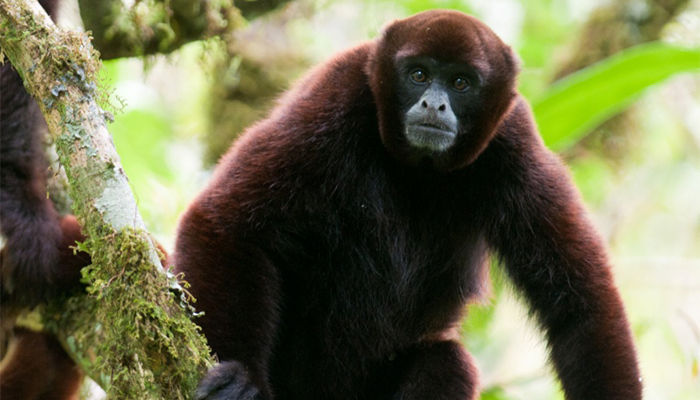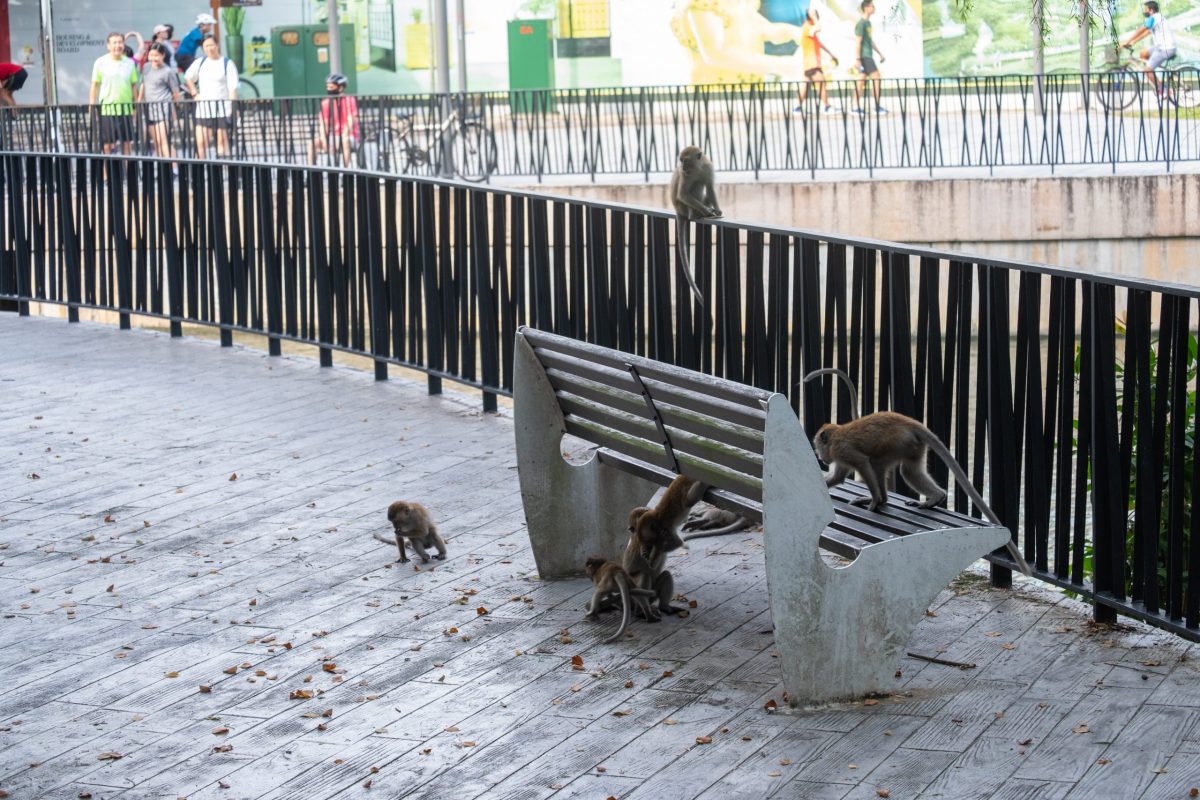
Living in the City in Nature means that there’s a high chance you’ve heard the horror stories that have resulted from human interactions with monkeys.
Even if you don’t live near the macaque hot-spots in MacRitchie Reservoir or Bukit Timah Nature Reserve, you’ve probably seen the monkey-related news headlines pop up on your social media feed every few months. There have been a number of infamous incidents over the years, including one where a monkey stole a woman’s Koi bubble tea at a Macritchie bus stop, and another one where a Malaysian man woke up from a nap to see selfies and videos of a monkey in his camera roll.
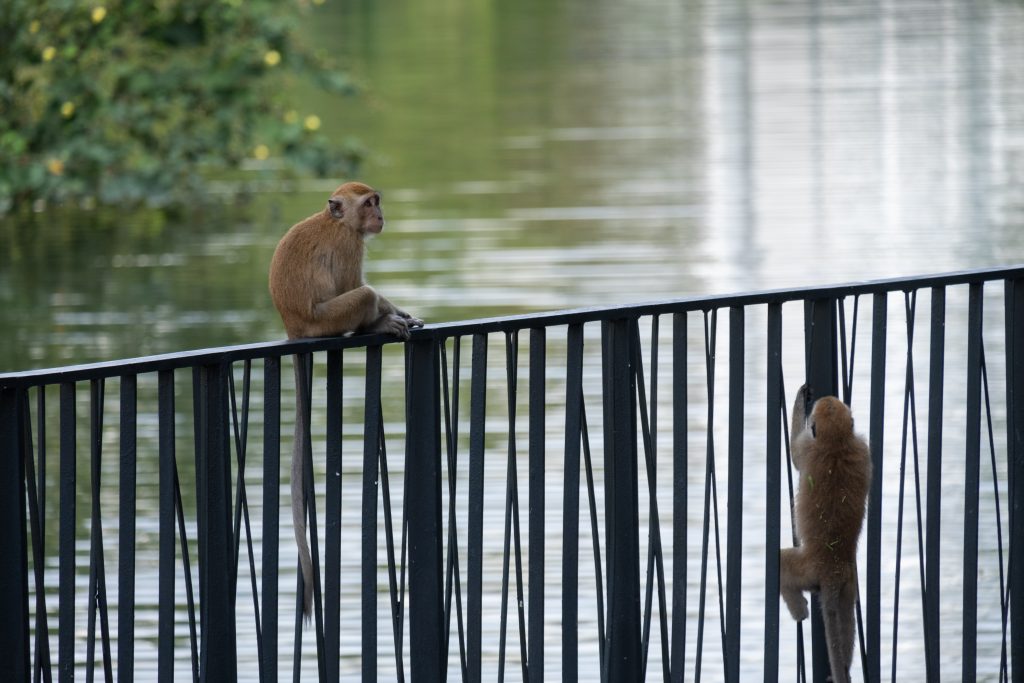
There’s no denying that the coexistence of monkeys and humans in Singapore will lead to both species crossing paths at some point. That’s why our team at the Jane Goodall Institute (Singapore), or JGIS in short, takes special care in the deployment of our Monkey Guards and Monkey Walk guides. Respectively, they help create a safe barrier between people and macaques, and conduct nature walks around Bukit Timah, MacRitchie and Lower Peirce Reservoir.
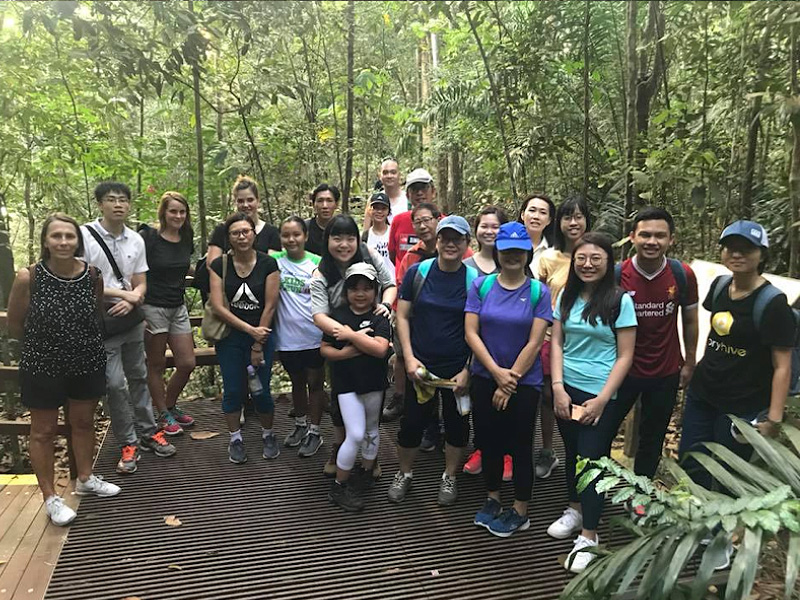
During the briefing conducted at the start of each Monkey Walk, our guides emphasise on keeping all belongings in your bags, paying close attention to nature, and perhaps most important of all, observing wildlife etiquette.
The last principle encompasses lowering one’s volume so as not to disturb the wildlife, keeping a distance from the macaques (especially the babies, since their parents would be more protective over them) and avoiding sudden movements in front of them. In fact, the general consensus I received from the JGIS guides I reached out to was simply… “do not interact with monkeys”.
Oftentimes, especially since interacting with wild animals causes them to alter their behaviour towards humans, not abiding by these rules results in those exact horror stories you hear about in the news. Our very own JGIS members have had their own fair share of them.
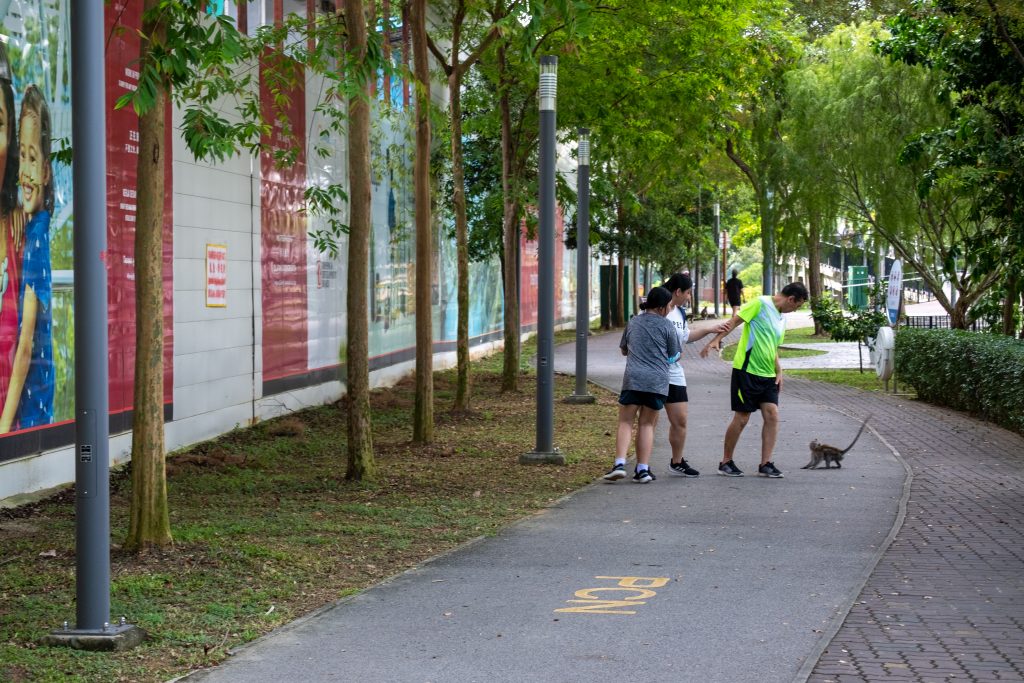
Yuan Yi, a Monkey Walk guide who’s been volunteering with JGIS since 2017, tells me about how she once helped a group of picnickers when monkeys tried to snap up their leftovers. There were also other instances where members of the public broke the rules of the nature reserves and had to be stopped from feeding monkeys, or fishing in the no-fishing zone.
Joe, a Wildlife Ambassador, Monkey Guard and Monkey Walk guide for JGIS, also cites how he will “encounter people talking and laughing very loudly [or] playing music loudly on their portable speakers” on almost every nature walk.
While not a horror story — if anything, it’s a heartbreaking one — our JGIS Primates Team had to take on the task of reuniting a baby monkey with its family after a man harassed the macaque family with a child’s scooter just a few months ago. Luckily, the reunion was a successful one, but the situation could have turned out much worse, with the baby being rejected from the troop, or even killed.
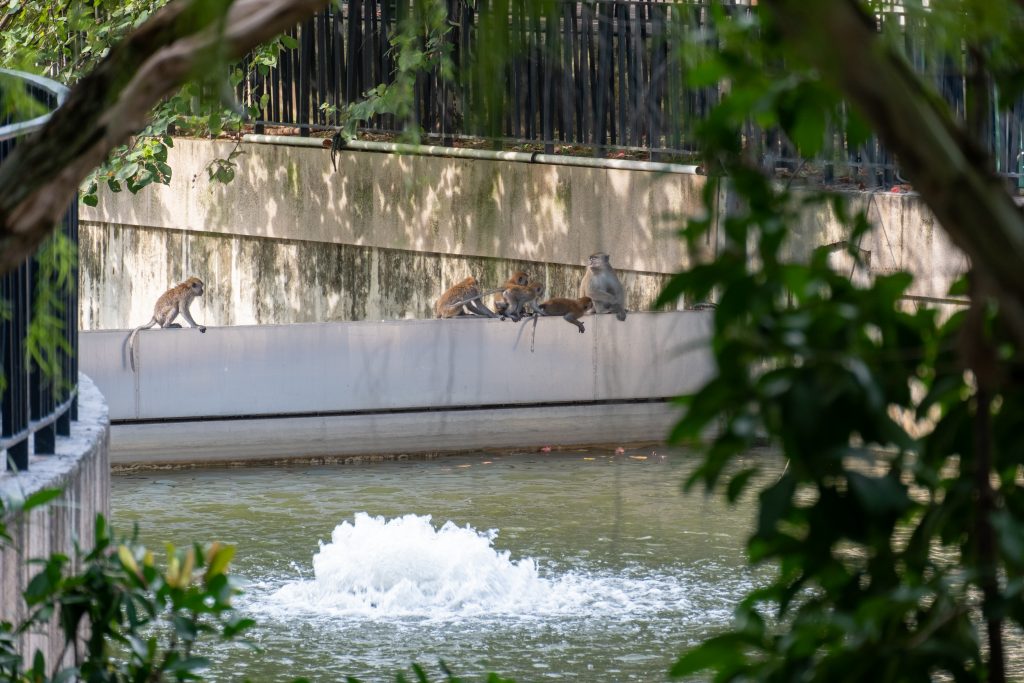
“I think actions from the community to stop misbehaviours are quite important,” Yuan Yi states. And it’s true. If everyone were to educate themselves on the natural habits and territories of wildlife, cultivating a sense of respect for nature as well as a ‘look-but-don’t-touch’ mindset, we could create an environment where interacting with monkeys and other wild animals is discouraged. With that goal in mind, what we can do now is keep spreading awareness and stepping forward to do the right thing whenever we notice somebody putting themselves, or the wildlife around them, at risk.
Perhaps then, we won’t see the monkey horror stories quite as frequently on our newsfeeds.



